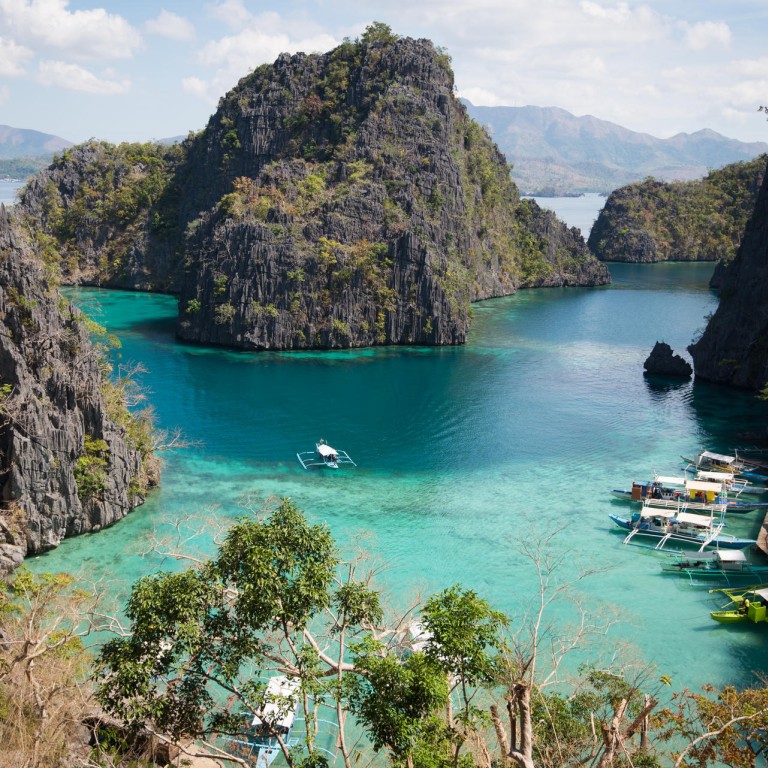
Diving Japanese warship wrecks in Palawan is an eery experience
The clear waters of Coron Bay in the Philippine island province of Palawan contain 12 second world war Japanese shipwrecks and are a paradise for divers
CORON – PAST AND PRESENT
Our plane touches down on the small airfield in Busuanga. A short ride takes us through hills, past farms and down to Coron on the southern shoreline. The first impression is of a typical Philippine town. Dusty streets wind past local stalls; the soft, undulating thuds of rickshaw motors; children of all ages play freely in the roads. We head for the dive shops.
The pre-dive briefing prepares us for what we are about to see, and explains why we will see it. There are remnants of 12 Japanese second world war ships on the seabed of Coron Bay. Seventy years have passed since they were sunk by American fighters and the intervening time has warped the structures, eroded the steel and created marine habitats.

From the surface it's impossible to tell what lies beneath. Struggling to hold onto the guide rope against the weight of the current, we make our final checks and the descent begins. Jellyfish appear and are pulled past us by the current. From the depths, structures start to appear. Murky and indistinguishable at first, slowly we see masts, railings and the stern. Twenty-three metres below the surface we can make out the tear in the deck of the Okikawa Maru oil tanker, blown apart by American bombs. This is where we enter.


OKIKAWA MARU
The light from the surface dims. Our torches are the only illumination and we lose awareness of the size of the space we are in. Ducking through an opening in the wall we emerge in the first of the oil chambers. Green light streams in through an opening above our heads, highlighting sections of this cavernous room and silhouetting shoals of fish that call this place home.
The path to the next room is through a small opening below us. Minding our tanks we squeeze through, balancing our buoyancy with our breath to minimise contact with the rusty walls. The structure of this next room is broken and more of the ships' features can be seen. Old machinery hangs, frozen in time. Prison bars tell an ominous tale.


We exit, emerging on the deck more than 100 metres from where we entered. Here, light from the sun has allowed coral to grow and support all manner of life. We drift with the current back to our starting point, stopping briefly to watch as a stingray glides over the Okikawa and drops effortlessly through a breach in the hull. Gripping the rope, we begin our gradual ascent.
Each dive brings a different experience. We navigate the tight passageways in the Lusong gunboat. The eerie views of the well-preserved structure and machinery of the Akitsushima aircraft carrier are like a trip back through time. As we observe the immensity of the Kogyo Maru supply ship, a mature hawksbill turtle emerges from the darkness. Indifferent to our presence, it swims past us to the surface to breathe.


ABOVE WATER
Rest and recovery are welcome between dives. Short boat rides out from the town lead us to the pristine beaches and secluded coves of Coron Island. Its jagged limestone cliffs encase peaceful lagoons and shelter coral gardens — hot springs well up out of the ground. We take a short walk over the hillside and down to the peaceful Kayangan Lake. Later, from La Sirenetta Bar in Coron harbour, we watch the boats return home as the sun sets over the distant hills. Following the lead of the locals we take things easy, order another mango shake and eat from the barbecue. Looking out across the waves we wonder what we will find next.

What you need for the trip
- Open Water PADI/SSI certificate is the minimum requirement.
- Advanced Open Water certificate allows for deeper dives and more complicated routes around wrecks.
- Wreck diver speciality certificate allows access to the deeper internal areas of the wrecks.
- All certificates can be obtained in Coron from licensed dive shops and qualified instructors.
- All equipment is available for hire at the dive shops but you can bring your own dive computer, underwater camera and other items.
How to get there, and where to stay, eat and train
- There are daily flights to Busuanga from Manila, with Philippine Airlines and Cebu Pacific.
- Sophia's Garden Resort in Coron Town is a great getaway option with easy access to the town.
- Swiss-owned Winnies is an excellent restaurant in the centre of town, catering to all tastes.
- Fun dives and all courses can be booked with Neptune Dive Centre in Coron town.
